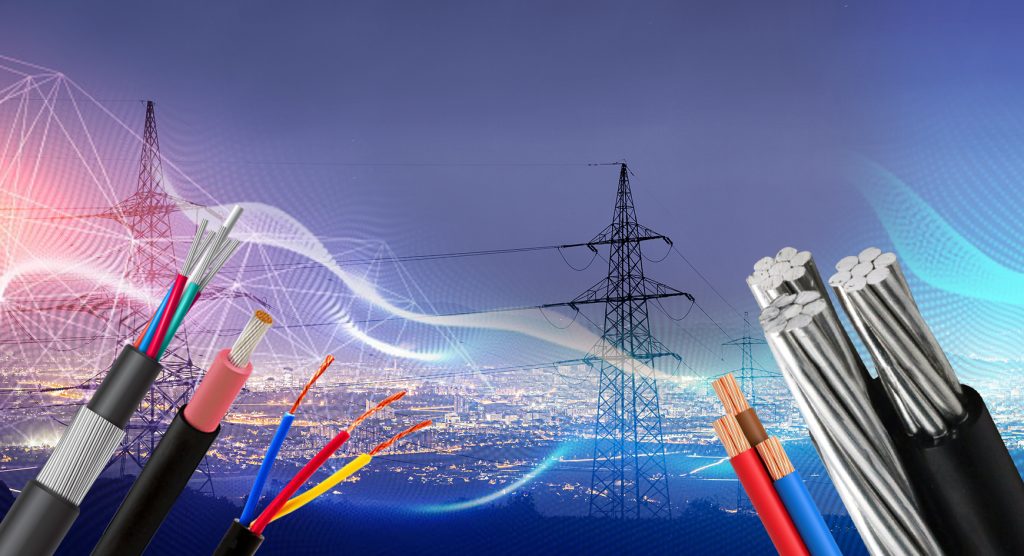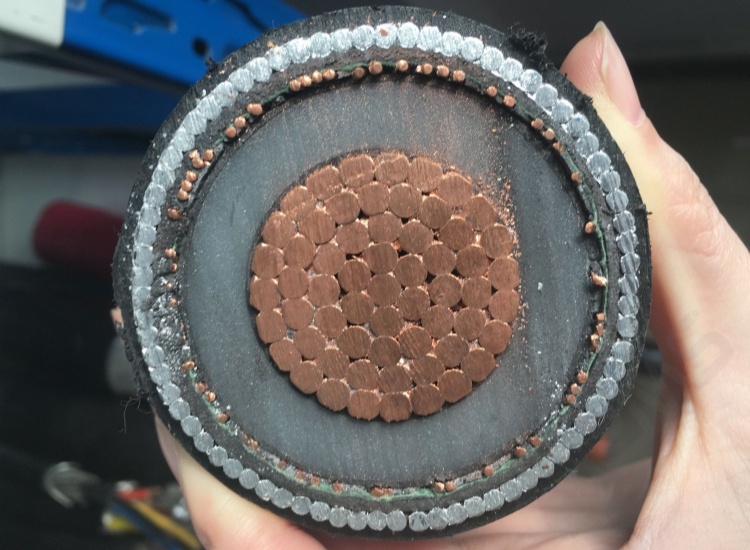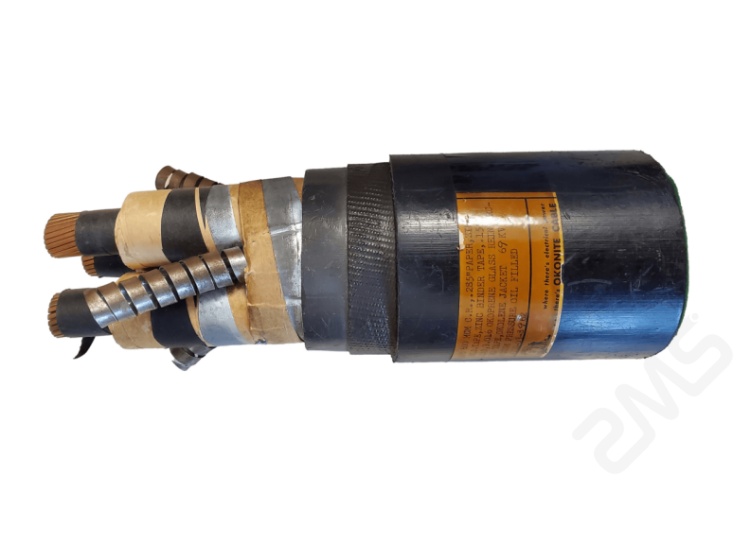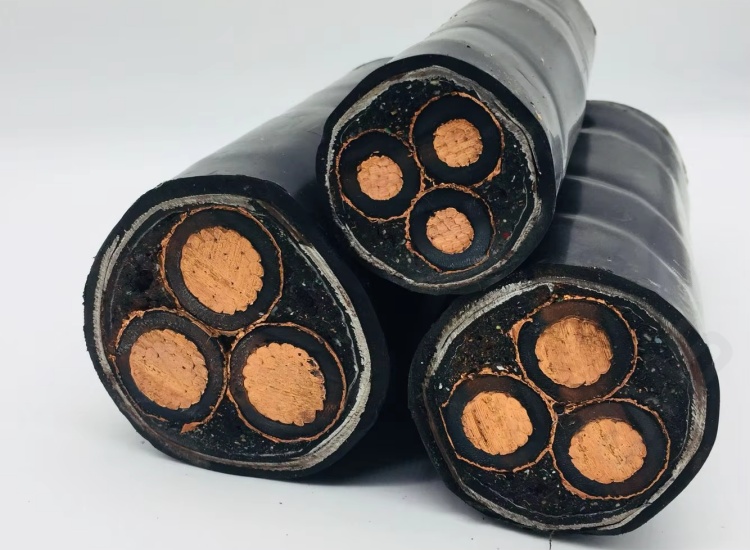High voltage cable solutions are an essential part of modern power transmission and distribution networks. Ensuring the efficient and safe transmission of power over long distances, these cables play a vital role in the world’s rapidly evolving societies, enabling utilities and industries to maintain an uninterrupted supply of energy. As global power demand grows and renewable energy sources expand, how high voltage cables are developed and deployed becomes more important than ever.

In this article, ZMS Cable provides an in-depth look at high-voltage cable solutions, including their types, applications, benefits, and the latest advances in the industry.
What Are High Voltage Cables?
High-voltage (HV) cables are cables designed to operate at voltages above 35 kV and in some cases, up to 500 kV or more, also known as ultra-high-voltage cables. These cables are used for power transmission and distribution over long distances, especially in high-load environments such as power grids, industrial plants, and renewable energy facilities.
Components of High Voltage Cables
| Conductor | Typically made of copper or aluminum to ensure efficient electrical conductivity. |
| Insulation | Made from materials such as cross-linked polyethylene (XLPE) or ethylene propylene rubber (EPR) to prevent electrical leakage. |
| Shielding | Metallic or semi-conductive layers help manage electrical fields and reduce electromagnetic interference. |
| Armor (Optional) | Provides mechanical protection in extreme environmental conditions. |
| Outer Sheath | A protective layer that guards against environmental factors like moisture, chemicals, and physical damage. |
High Voltage Cables For Different Types Of Applications
1. XLPE-Insulated High Voltage Cables
Features: High thermal resistance, lightweight, excellent electrical properties.
Applications: Power grids, underground transmission, and renewable energy projects.
Voltage Range: Up to 500kV.

2. Oil-Filled High Voltage Cables
Features: Superior insulation, suitable for extra-high voltage applications.
Applications: Long-distance power transmission.
Voltage Range: 110kV and above.

3. Gas-Insulated High Voltage Cables
Features: Use of gas insulation to handle extreme voltages.
Applications: Urban power transmission and industrial applications.
Voltage Range: Above 200kV.

4. Submarine High Voltage Cables
Features: Specially designed for underwater installations.
Applications: Offshore wind farms, undersea power transmission.
Voltage Range: 110kV to 400kV.

High Voltage Cable Applications In Industrial Projects
Power Transmission and Distribution
HV cables are the backbone of power transmission networks, efficiently delivering electricity from generation plants to substations and ultimately to consumers.
Renewable Energy Integration
With the rise of wind and solar energy, HV cables are essential for connecting renewable energy sources to national grids.
Industrial and Commercial Power Supply
Large-scale industries, factories, and commercial buildings rely on HV cables for a stable and continuous power supply.
Underground and Submarine Power Systems
HV cables are widely used in urban environments where overhead lines are impractical, and for connecting offshore energy installations.
Railway and Transportation Infrastructure
HV cables support railway electrification, metro systems, and electric vehicle (EV) charging networks.
Real-World High Voltage Cable Projects
1. SuedLink HVDC Transmission Project (Germany)
Details: One of the largest underground high voltage direct current (HVDC) transmission projects in Europe.
Purpose: To transmit wind-generated electricity from northern Germany to southern industrial regions.
Voltage Level: ±525kV.
Impact: Helps Germany achieve its renewable energy targets and stabilize the national grid.
2. North Sea Link (UK-Norway Submarine Cable)
Details: The longest subsea interconnector in the world (720 km).
Purpose: Enable electricity exchange between the UK and Norway, improving energy security and efficiency.
Voltage Level: ±525kV.
Impact: Facilitates the integration of renewable energy and reduces reliance on fossil fuels.
3. China’s Ultra-High Voltage (UHV) Projects
Details: China has built multiple UHV AC and DC transmission lines to transport electricity over thousands of kilometers.
Purpose: Connect renewable-rich western regions to high-demand eastern cities.
Voltage Level: Up to ±1100kV (world’s highest capacity transmission lines).
Impact: Supports massive renewable energy deployment and reduces power losses over long distances.
4. Viking Link (UK-Denmark Interconnector)
Details: A 765 km HVDC submarine cable between the UK and Denmark.
Purpose: Strengthening the power grids of both countries and increasing renewable energy usage.
Voltage Level: ±525kV.
Impact: Enhances energy security and helps balance fluctuating renewable energy production.
Benefits of High Voltage Cable Solutions
- Enhanced Transmission Efficiency
HV cables reduce power losses over long distances, ensuring efficient power delivery.
- Improved Safety and Reliability
Advanced insulation and shielding minimize electrical hazards and system failures.
- Space-Saving Underground Installation
Underground HV cables help conserve space and prevent visual pollution.
- Long Lifespan and Durability
Manufactured with high-quality materials, HV cables offer long-term performance with minimal maintenance.
- Eco-Friendly and Sustainable
HV cables support renewable energy transmission, reducing reliance on fossil fuels.
Recent Developments in High Voltage Cable Solutions
- ZMS Has Advanced Insulation Materials
With the power industry in full swing, innovations in XLPE and superconducting materials have dramatically increased the efficiency and longevity of cables.
- Intelligent Cable Monitoring Systems
New technologies enable real-time monitoring of the condition of high-voltage cables to detect faults and prevent them.
- High-Capacity Submarine Cables
Advances in submarine cable technology have facilitated long-distance offshore power transmission.
- Expansion Of High Voltage Direct Current (HVDC) Systems
HVDC cables are becoming increasingly popular because of their ability to transmit power over extremely long distances with minimal losses.
Choosing the Right Supplier for High Voltage Cable Solutions
When selecting a high voltage cable supplier, consider the following:
- Quality and Compliance: Ensure the cables meet international safety and performance standards (e.g., IEC, IEEE, UL).
- Experience and Reputation: Choose suppliers with a proven track record in the industry.
- Customization Options: Look for suppliers that offer tailored cable solutions for specific project needs.
- Technical Support and Services: Reliable after-sales support and maintenance services are crucial for long-term cable performance.

High voltage cable solutions are fundamental to modern electrical infrastructure, providing efficient, reliable, and sustainable power transmission. With continuous advancements in materials, monitoring technology, and installation techniques, the future of high voltage cables looks promising. As electricity demand grows, investing in high-quality HV cables will be essential for meeting global energy needs and ensuring a stable power supply for generations to come.
For industries and power utilities looking to optimize their electrical transmission systems, partnering with a trusted high voltage cable provider can make all the difference in achieving efficiency, safety, and long-term reliability.
